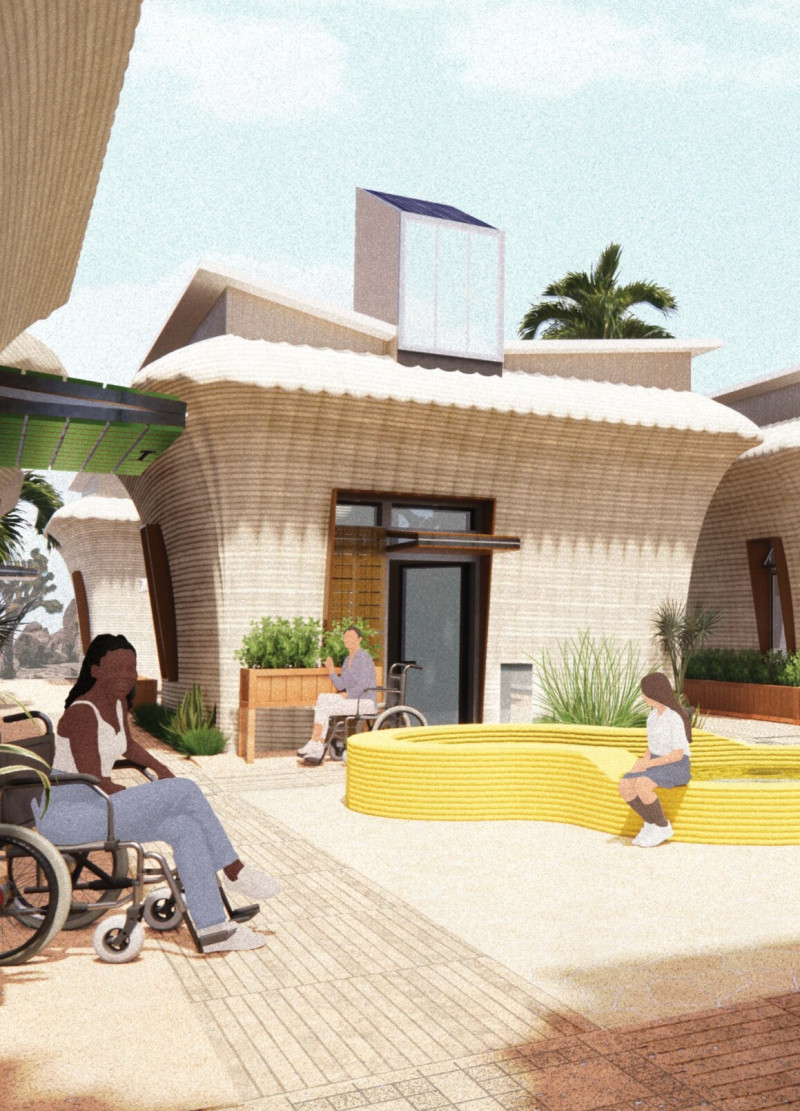5 key facts about this project
The project serves a multifaceted function, catering to both individual users and the community at large. Its design integrates spaces that promote interaction, productivity, and relaxation, reflecting a keen understanding of how physical environments shape human experiences. From the outset, the project was envisioned as a space that fosters connection—not just among its occupants but also with the surrounding urban landscape. This emphasis on community engagement is evident in the arrangement of public and private areas, which are thoughtfully organized to facilitate both social gatherings and moments of solitude.
A significant element of the project lies in its materiality. The selection and application of materials are not merely aesthetic choices; they are strategic decisions that enhance the building's performance and sustainability. The project utilizes materials such as reinforced concrete for structural integrity, wood for warmth and tactile quality, and glass to invite natural light while creating visual transparency. Each material was chosen for its suitability to the local climate as well as its ability to contribute to an energy-efficient building. The thoughtful layering of these materials not only generates a dynamic facade but also supports the building's thermal performance and acoustic comfort.
The architectural design incorporates unique approaches that distinguish it from typical projects in the area. One notable feature is the incorporation of green elements and biophilic design principles, which encourage a connection with nature. Green roofs and living walls not only serve to beautify the structure but also provide insulation, reduce rainwater runoff, and enhance urban biodiversity. Additionally, the integration of solar panels reflects a commitment to renewable energy, positioning the building as a progressive model for sustainable architecture.
Circulation is another critical aspect of the design. The flow within the building is organized in a manner that promotes ease of movement and accessibility. Wide hallways and open staircases encourage occupants to engage with their surroundings, while strategically placed communal areas provide spaces for spontaneous interaction. Careful consideration was given to the visual connections between different spaces, ensuring that occupants remain oriented and engaged as they move through the environment.
Lighting plays a pivotal role in the overall experience of the space. Natural light is harnessed through large windows and skylights, infusing the interior with brightness and warmth throughout the day. This reliance on natural illumination not only enhances mood and productivity but also reduces reliance on artificial lighting, further contributing to the project’s sustainability goals.
A distinctive characteristic of the architectural design is the integration of outdoor spaces. Balconies, terraces, and landscaped areas extend the living experience beyond the building's interior, blurring the lines between indoor and outdoor environments. These spaces are not mere appendages but integral elements of the architectural composition, designed to provide residents and visitors with a variety of settings for different activities, from quiet contemplation to social gatherings.
As this architectural design project exemplifies a thoughtful engagement with its context, function, and community, it stands as a testament to what careful and conscientious design can achieve. To gain deeper insights into this project, including its architectural plans, architectural sections, and architectural designs, readers are encouraged to explore the complete project presentation. The detailed exploration of its architectural ideas will reveal the depth of consideration and expertise that underlie this commendable undertaking.


























